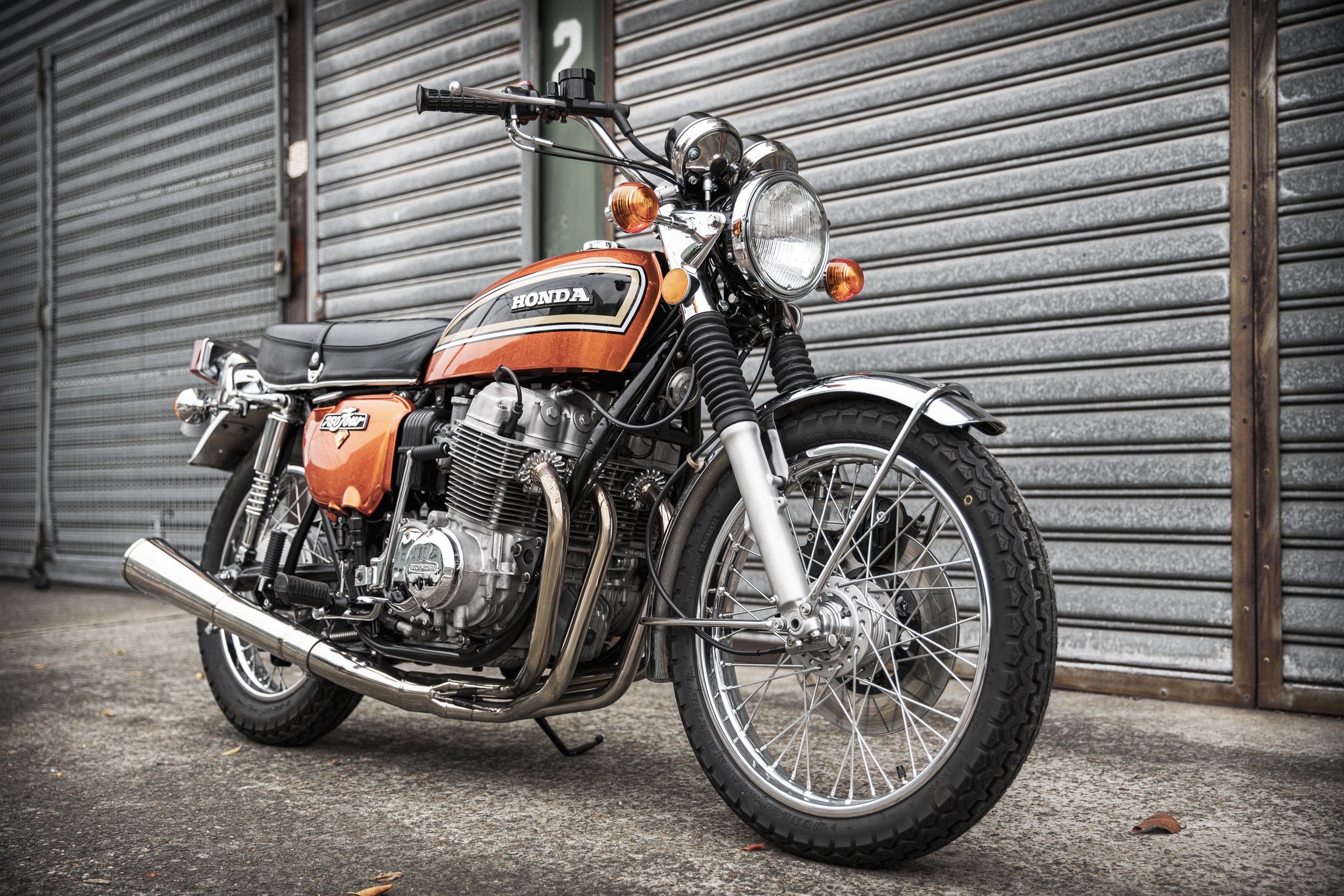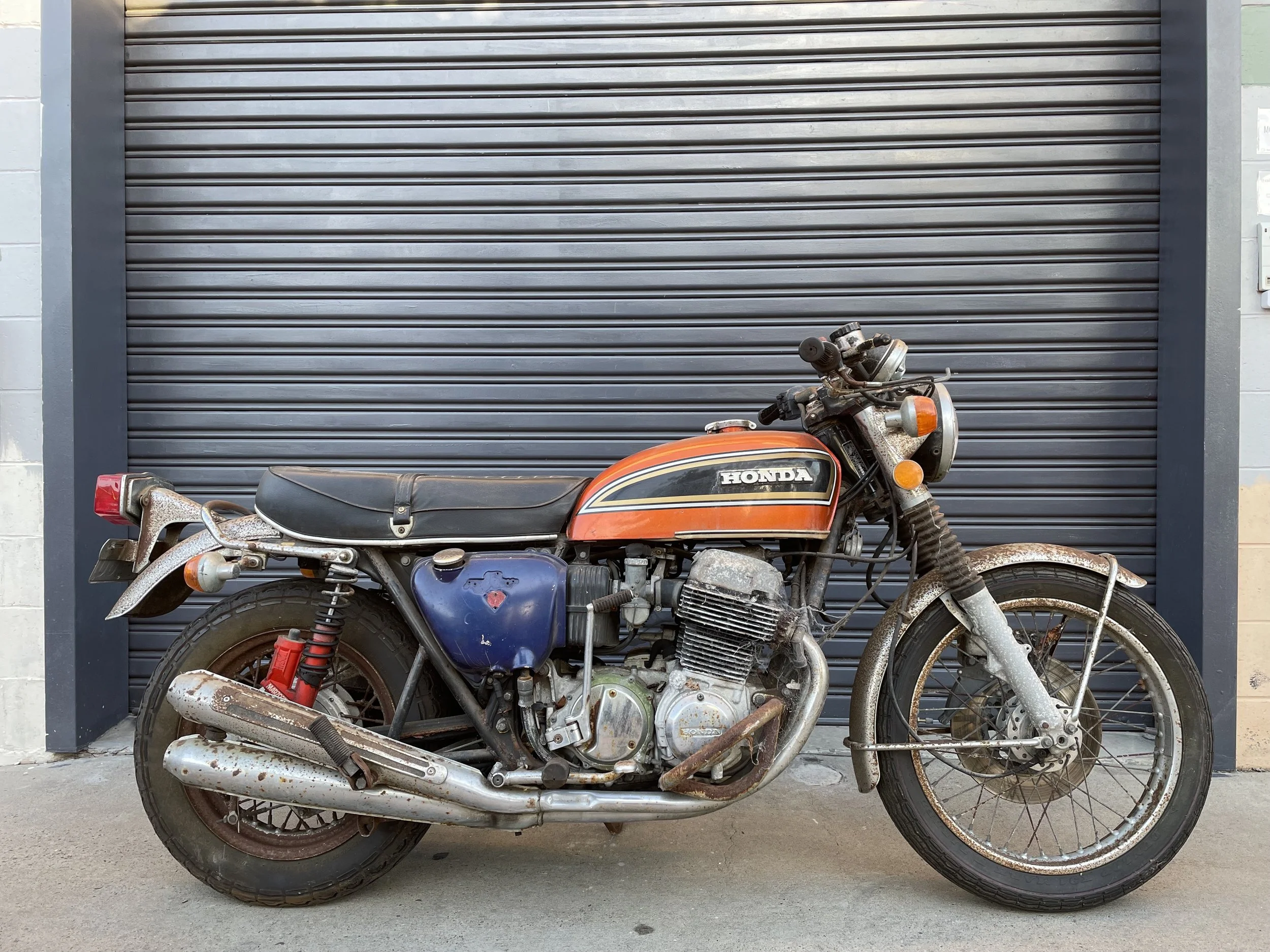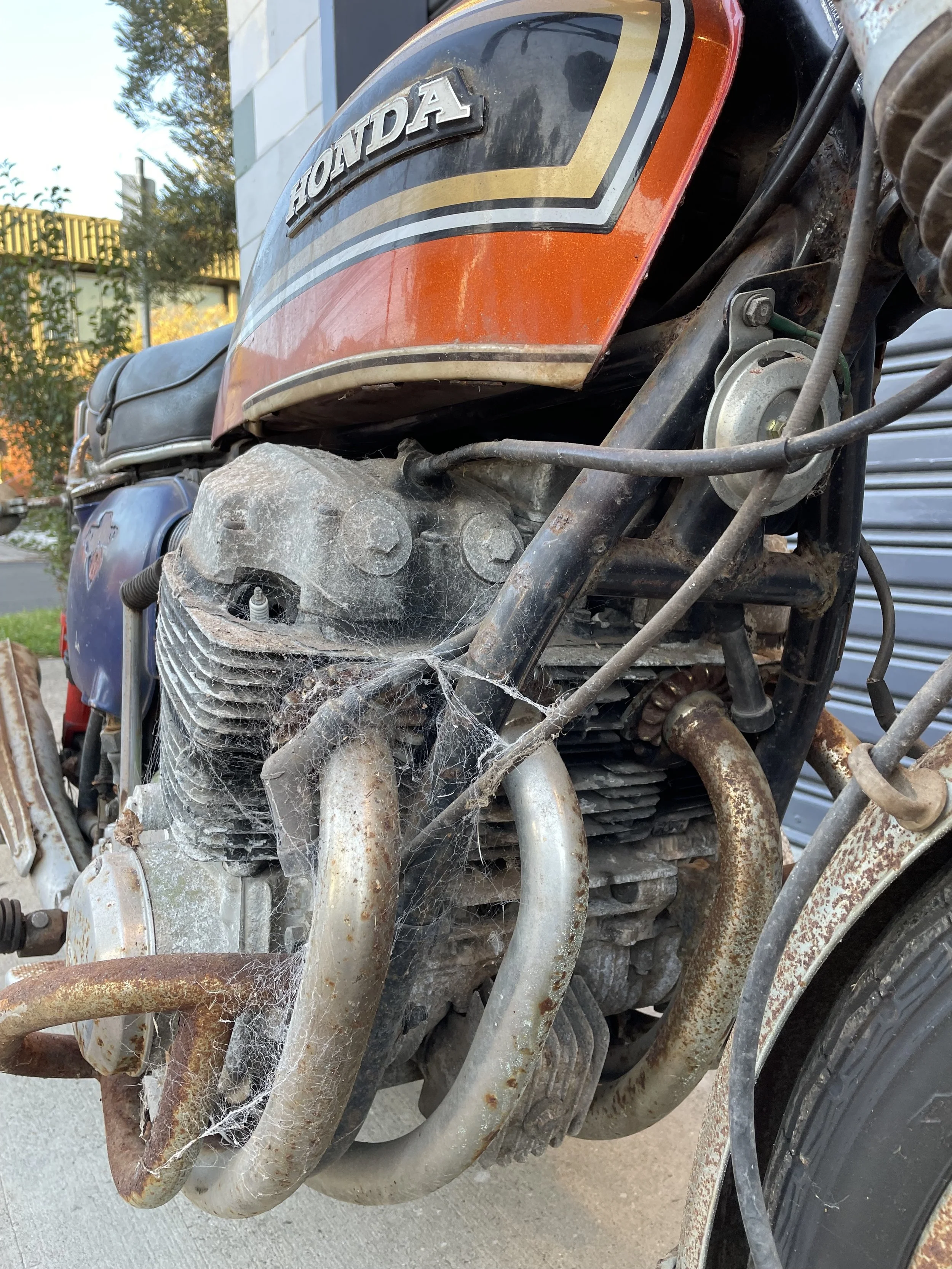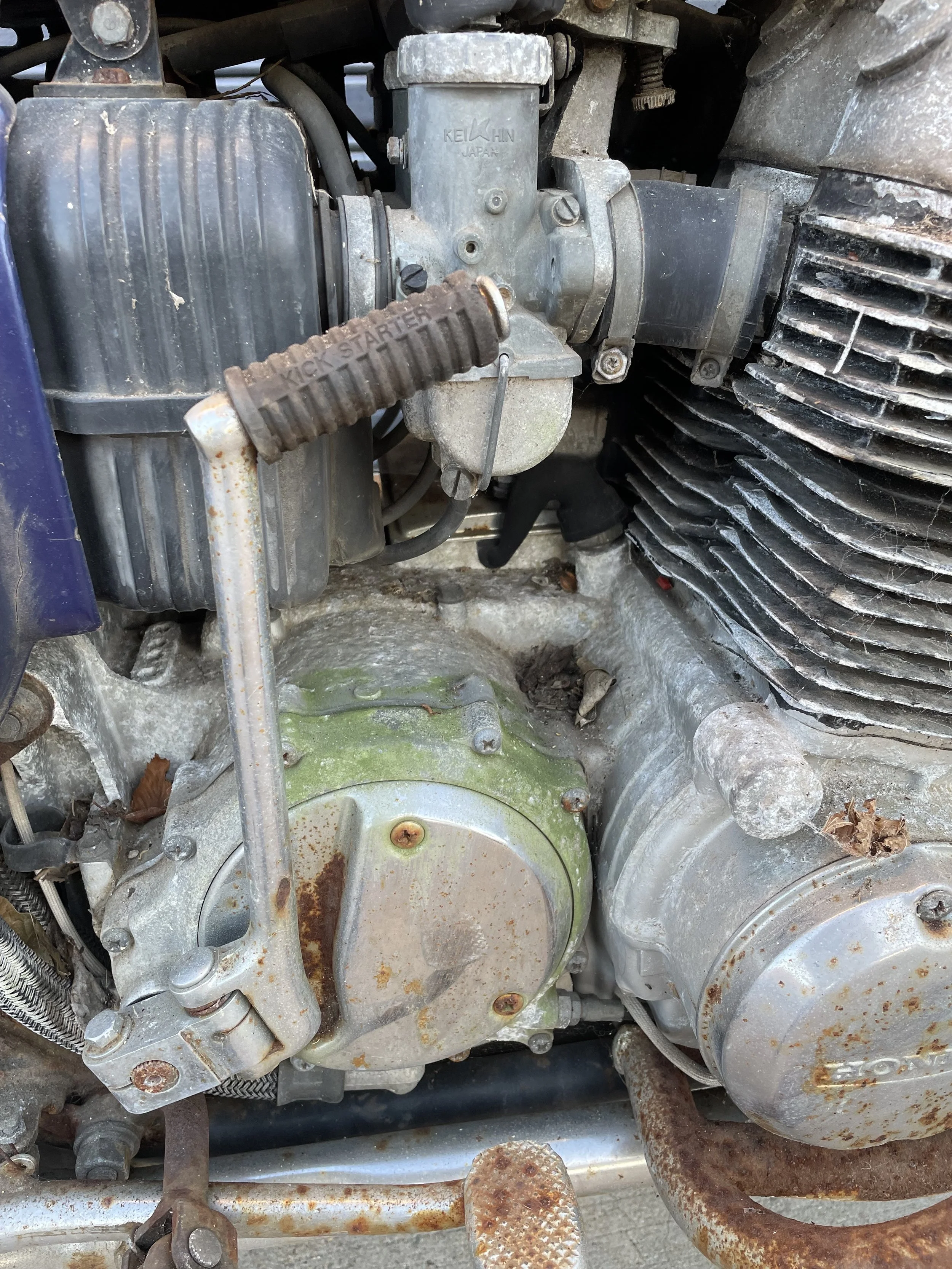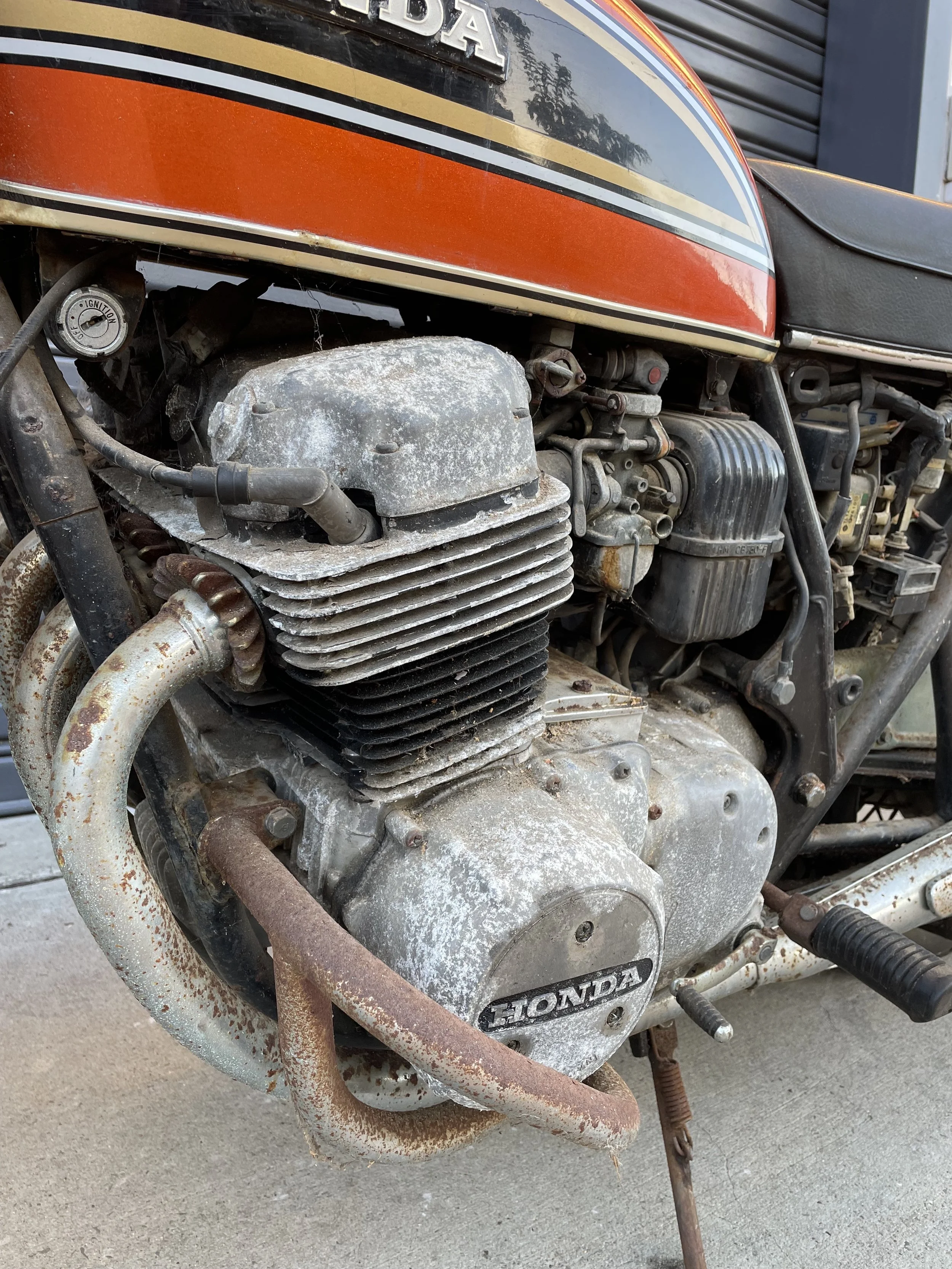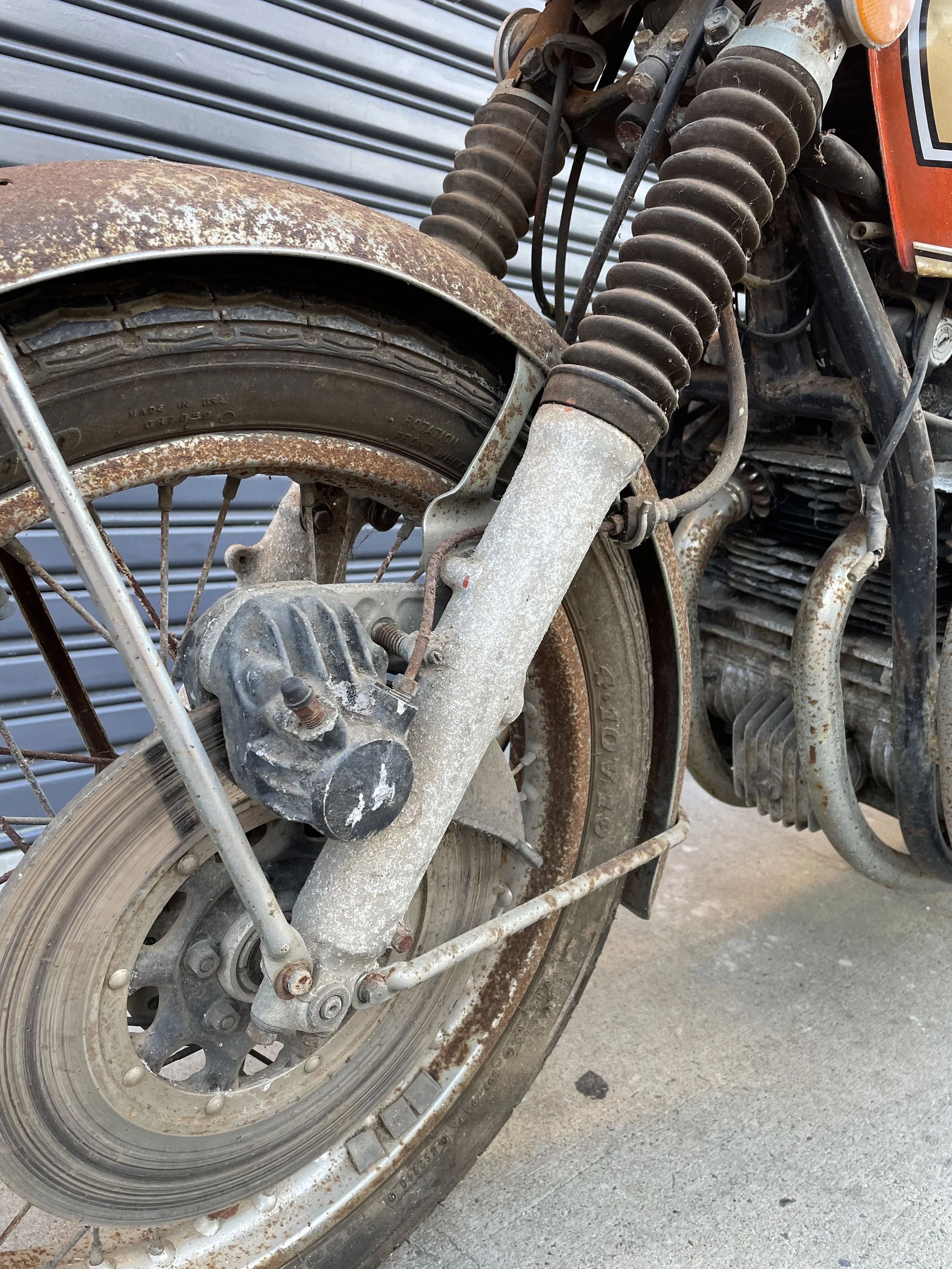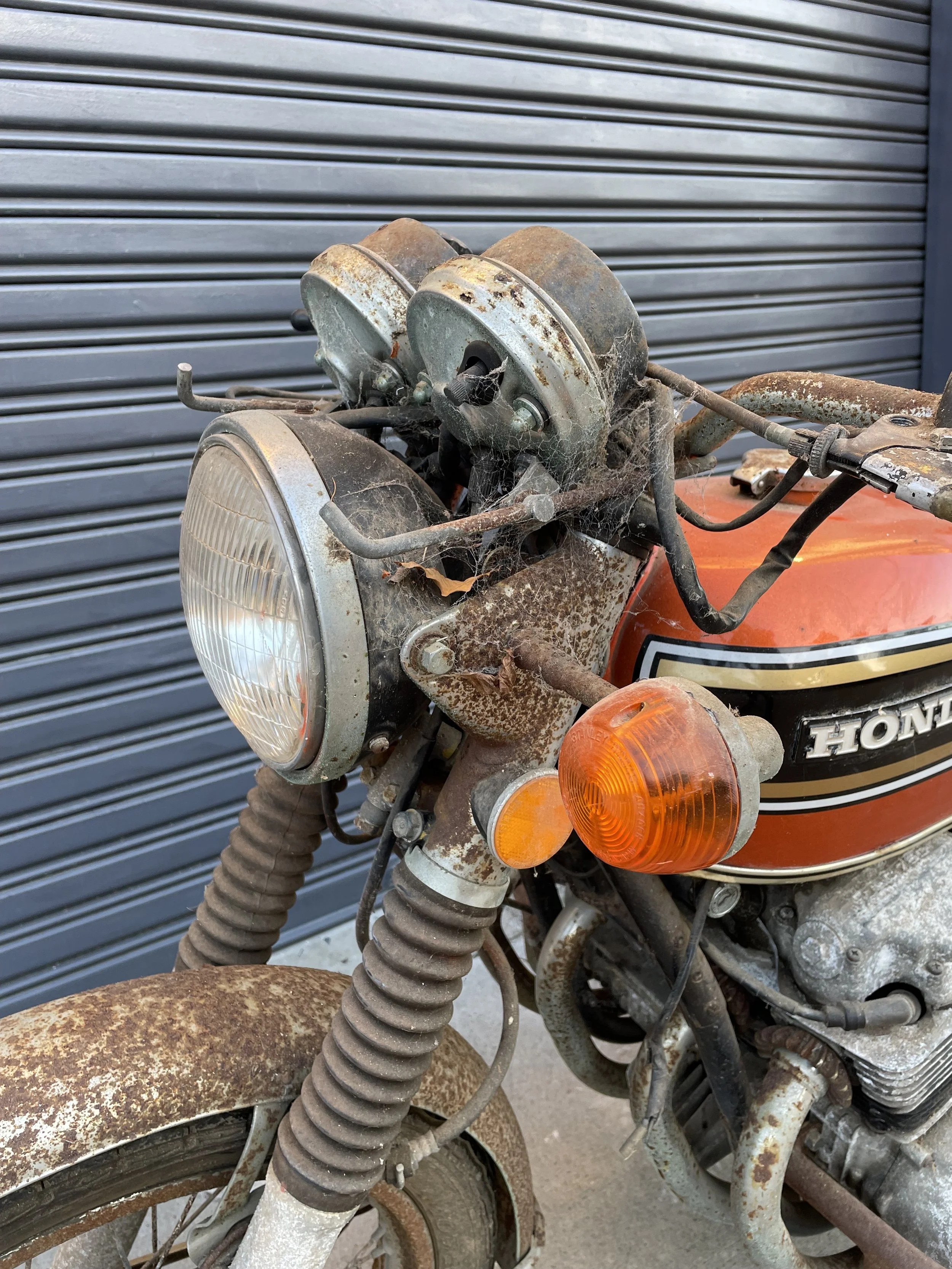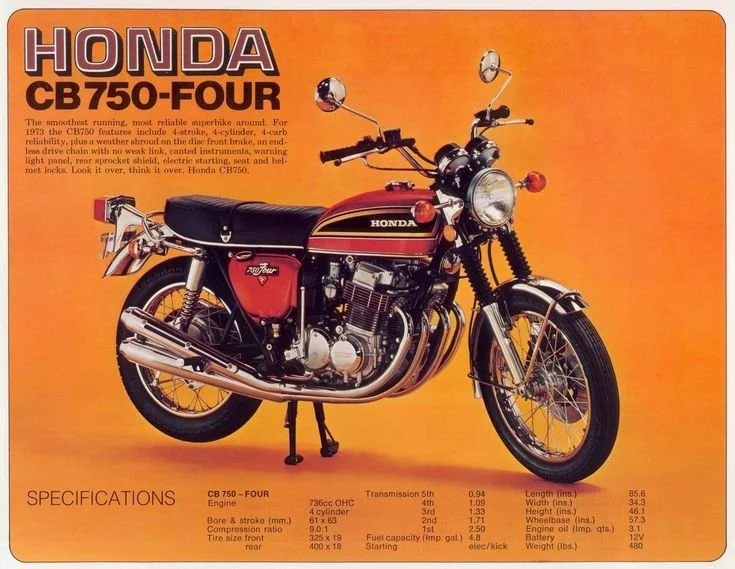1976 HONDA CB750
“The bike had been stolen twice...each time it was recovered I would find modified parts like the painted side covers in an attempt to disguse the bike.”- David (Owner)
Rough is a bit of an understatement…
…to describe the condition this K6 was in when it arrived at the workshop. For most bikes in this state we strongly advise our clients on a budget to head to the local classifieds, find one that is running and riding, buy it and enjoy it; that wasn't possible for David. Having owned this bike since new, Davids bike has more than a few stories to tell, like when the bike was stolen, recovered and then stolen again; After the second recovery, the thieves had had their way with the bike and David parked the K6 in the shed where it would hibernate for years before rekindling his love for two wheels and deciding to bring the bike back up to spec.
“The smoothest running, most reliable superbike around”
Until 1969, when Honda released the in-line four-cylinder CB750, the British bike industry could console itself with the thought that while Japan was the source of lots of small bikes, if a rider wanted adult-strength motorcycling with 100-percent testosterone certification, he had to buy a hot, vibrating British twin from Triumph, BSA, or Norton - CycleWorld
By 1976, Honda had a reliable platfrom and had already begun to solidify themselves in the global marketplace with around 42,000 K6’s being sold in 1976, some notable changes this year featured a stronger swing-arm; detuned engine; no chain oiler; new clutch basket and chrome clutch cover.
This 1976 Honda CB750 has been restored with absolute attention to originality and mechanical precision. A true factory-grade rebuild, every component has been disassembled, inspected, and either restored or replaced to match OEM specifications. The engine was rebuilt from the crankshaft up — every seal, bearing, and fastener accounted for — ensuring performance that’s as close as you’ll get to 1976, in 2025.
From the internals to the final detailing, no shortcuts and no guesswork—just a comprehensive return to factory-correct form.
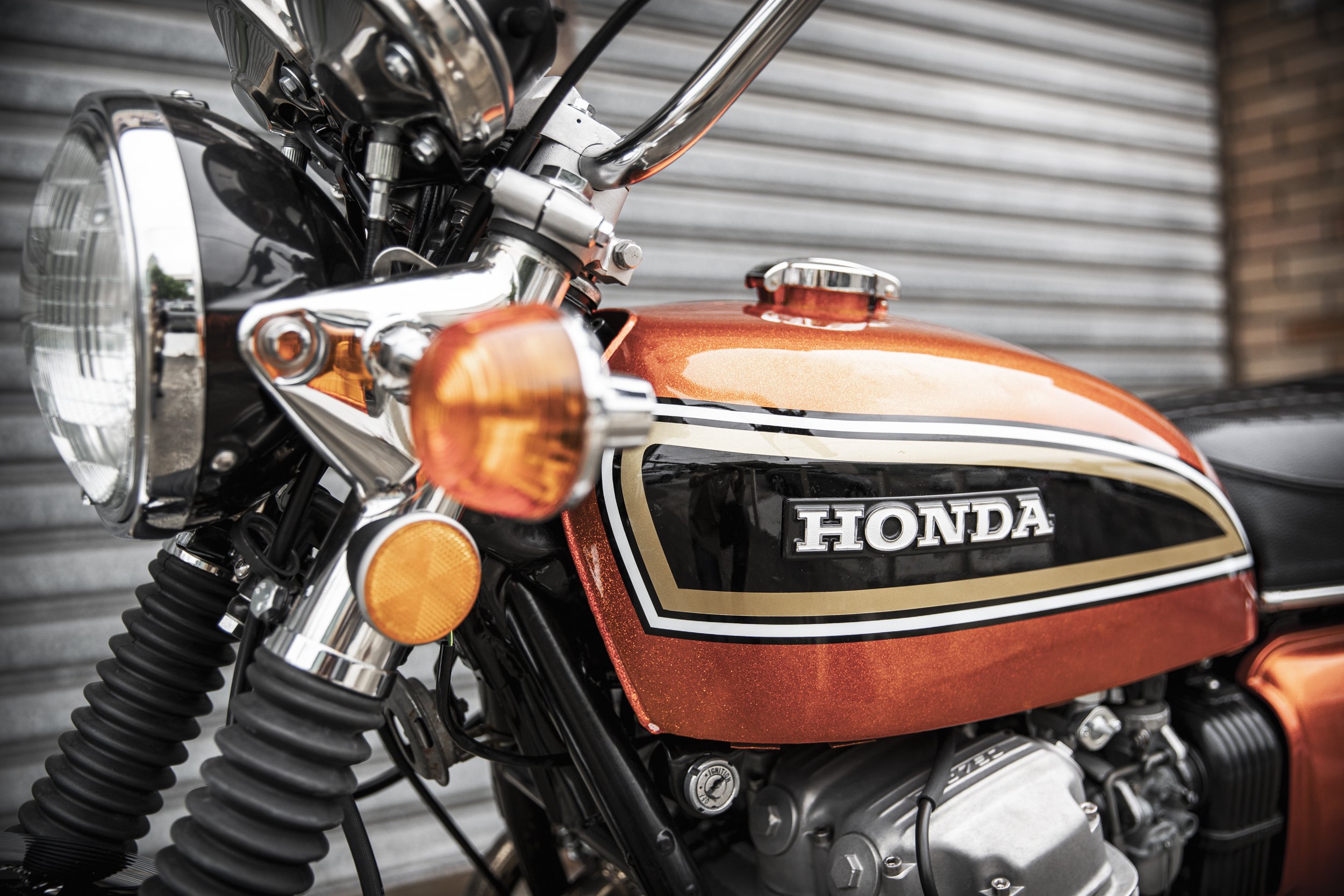
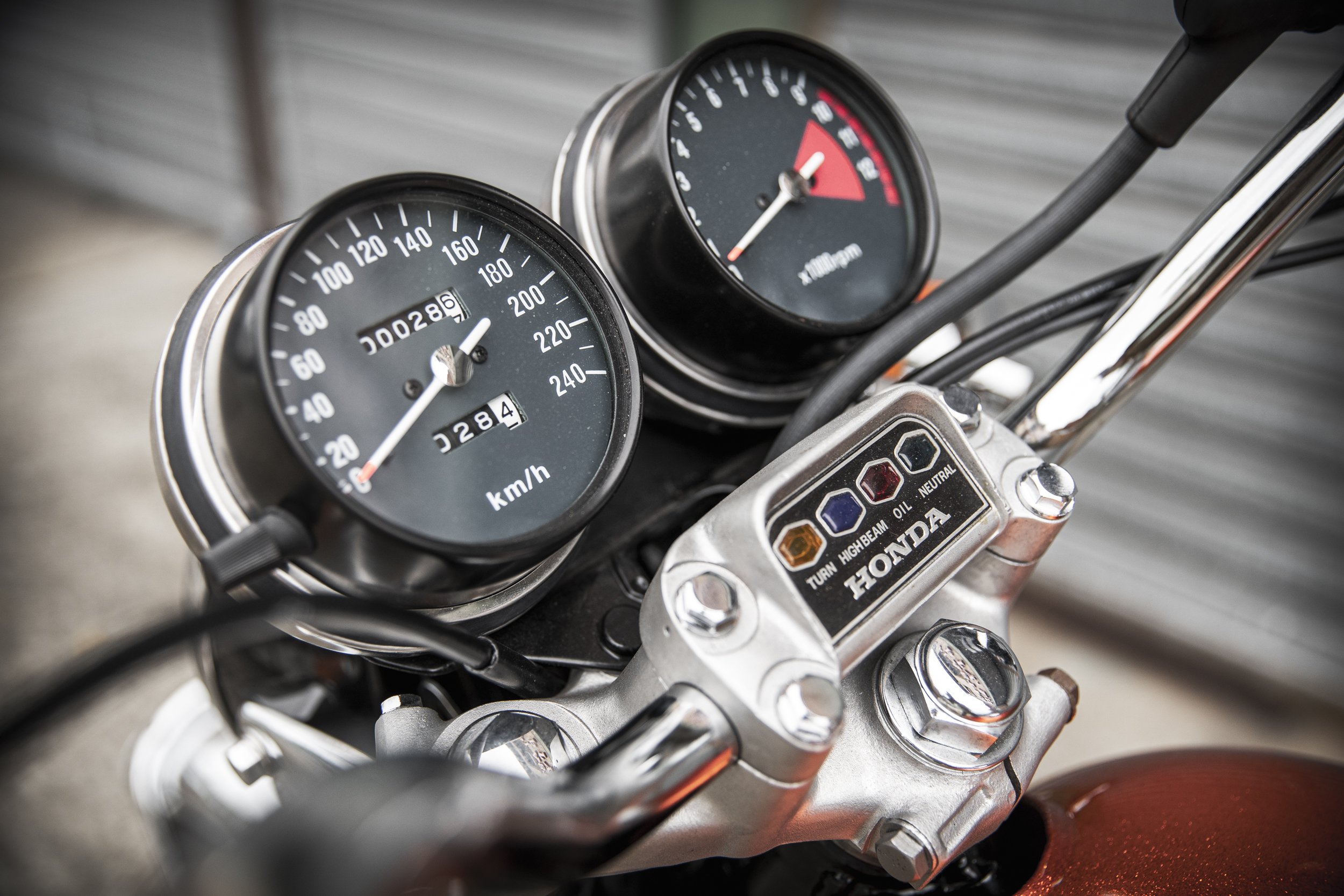
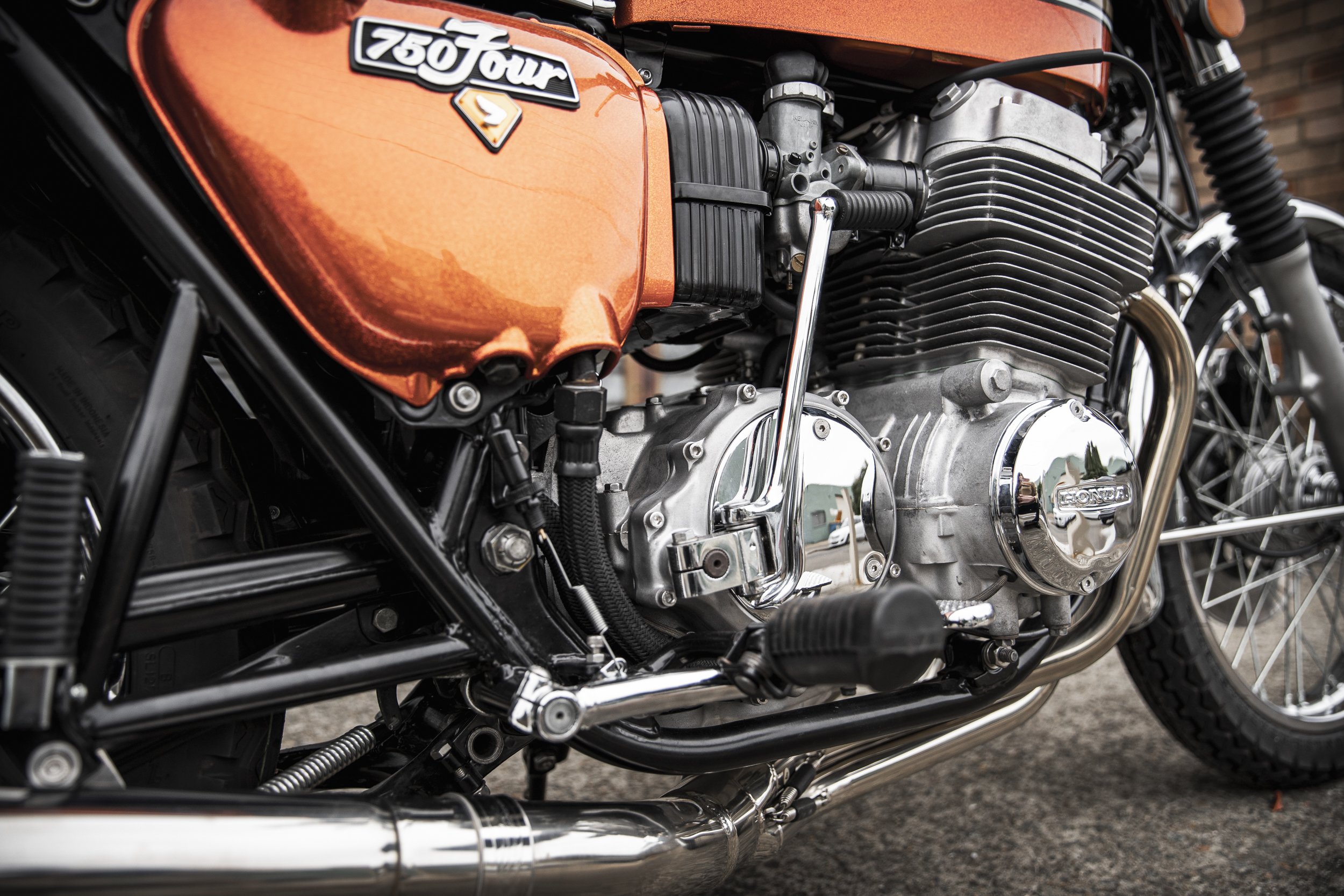



Correct paint codes, factory-style finishes, original fasteners re-zinc’d, and every system—electrical, braking, fuel—rebuilt with care and accuracy. Even the carburetors have been fully overhauled and tuned to factory spec.
This isn’t a modernised take or a visual tribute — it’s a comprehensive return to form for one of the most iconic Japanese motorcycles ever built. A restoration that respects the original design and delivers the ride and presence Honda intended.

